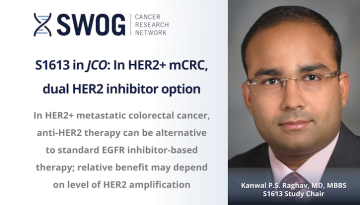SWOG Will Expand Phase II Accrual Monitoring
The NCI has explicit rules for monitoring accrual to our phase III trials, not to mention specific steps to follow if accrual is falling short of expectations. These include initially notifying the study chair that the trial has another six months to increase accrual to the required standard and eventually, if the standard isn’t reached, closing the trial.
The NCI’s strict monitoring and enforcement of these rules was suspended when the pandemic started buffeting trial accrual, but word has it the NCI will soon restart its former monitoring program, with CTEP’s early stopping guidelines for phase III trials expected to be in force again by next spring.
Starting later this year, SWOG leadership will begin formally monitoring accrual to our phase II trials as well. Our data and safety monitoring committee already carefully monitors accrual to all studies under its purview, and individual disease committees also monitor their trials – including phase II, regularly assessing feasibility. So why are we adding another layer of monitoring?
Our goal here is not to be punitive. Rather, we want to objectively identify, as early as we can, phase II studies that, if they continue on their current accrual trajectory, are unlikely to ever meet their primary objective. Think of this as our early warning system.
Early knowledge that a study is at risk widens our window for successful intervention to change the study’s accrual course. We have a wide range of strategies we can deploy to do this, and we have staff and NCI resources we can bring to bear. We’ve been successful in turning around accrual on numerous studies that were struggling to enroll at a sustainable rate. Stepping in early is key.
Sometime after SWOG’s fall group meeting, our Statistics and Data Management Center will prepare a report summarizing accrual numbers (already public on our website) for our phase II studies, to identify those in peril.
At least initially, they’ll apply a version of the rules CTEP now uses with phase III trials, looking for any phase II that has been open for at least 18 months and that has an average monthly accrual rate over the previous six months that’s less than 50 percent of the protocol’s target.
For each of these accrual-challenged trials, the SDMC will issue a report to SWOG’s executive committee summarizing the initial accrual targets and plotting recent accrual trajectories.
The executive committee will then invite the relevant executive officer to present the study -- providing background on the trial, identifying challenges that may be limiting accrual, and detailing any upcoming amendments that may affect the accrual rate. We may also ask the study chair to attend to answer questions. The meeting will be a chance to discuss concerns and potential solutions, or at least next steps on the road to solutions.
This new phase II monitoring program is a work in progress, and details may change as it is rolled out.
I want to emphasize again that it’s intended not to be punitive but to be proactive and helpful – to identify studies in trouble early enough that we can take steps that may help. We also believe that the number of phase II studies in this category is – and will continue to be – quite small.
We realize that the rules governing this review need to be flexible, as certain phase II trials are particularly difficult to accrue to and to predict accrual to. Our trials in rare cancers, for example, typically are phase II studies, and as rare cancers come with their own accrual challenges, unswerving application of fixed rules might not be advisable.
We expect our first review will take place soon after this fall’s group meeting, and we’ll plan to repeat it every six months. If you’ve got a phase II study that’s been slow to climb to a healthy accrual rate, consider this monitoring program a chance to potentially focus more attention and resources on meeting your enrollment challenges.
Other Recent Stories



